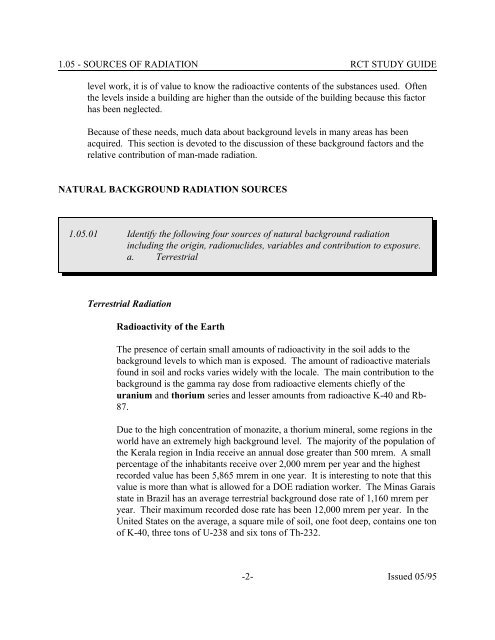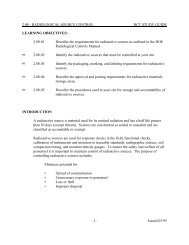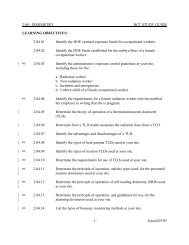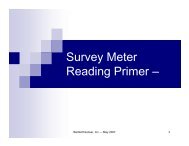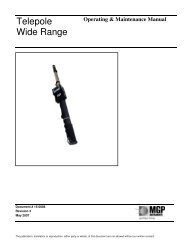SOURCES OF RADIATION - RCT STUDY GUIDE - NukeWorker.com
SOURCES OF RADIATION - RCT STUDY GUIDE - NukeWorker.com
SOURCES OF RADIATION - RCT STUDY GUIDE - NukeWorker.com
You also want an ePaper? Increase the reach of your titles
YUMPU automatically turns print PDFs into web optimized ePapers that Google loves.
1.05 - <strong>SOURCES</strong> <strong>OF</strong> <strong>RADIATION</strong> <strong>RCT</strong> <strong>STUDY</strong> <strong>GUIDE</strong>level work, it is of value to know the radioactive contents of the substances used. Oftenthe levels inside a building are higher than the outside of the building because this factorhas been neglected.Because of these needs, much data about background levels in many areas has beenacquired. This section is devoted to the discussion of these background factors and therelative contribution of man-made radiation.NATURAL BACKGROUND <strong>RADIATION</strong> <strong>SOURCES</strong>1.05.01 Identify the following four sources of natural background radiationincluding the origin, radionuclides, variables and contribution to exposure.a. TerrestrialTerrestrial RadiationRadioactivity of the EarthThe presence of certain small amounts of radioactivity in the soil adds to thebackground levels to which man is exposed. The amount of radioactive materialsfound in soil and rocks varies widely with the locale. The main contribution to thebackground is the gamma ray dose from radioactive elements chiefly of theuranium and thorium series and lesser amounts from radioactive K-40 and Rb-87.Due to the high concentration of monazite, a thorium mineral, some regions in theworld have an extremely high background level. The majority of the population ofthe Kerala region in India receive an annual dose greater than 500 mrem. A smallpercentage of the inhabitants receive over 2,000 mrem per year and the highestrecorded value has been 5,865 mrem in one year. It is interesting to note that thisvalue is more than what is allowed for a DOE radiation worker. The Minas Garaisstate in Brazil has an average terrestrial background dose rate of 1,160 mrem peryear. Their maximum recorded dose rate has been 12,000 mrem per year. In theUnited States on the average, a square mile of soil, one foot deep, contains one tonof K-40, three tons of U-238 and six tons of Th-232.-2- Issued 05/95


